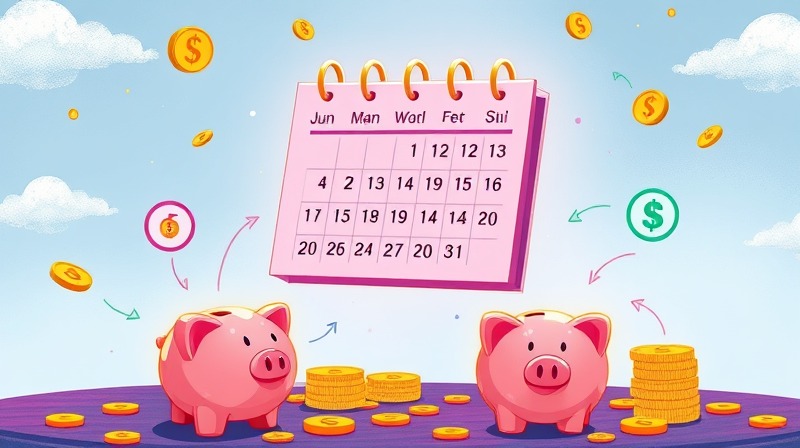
Managing your finances can feel overwhelming when you have to remember multiple due dates, paydays, and special occasions. By automated savings actions based on events, you can offload the mental load and ensure you’re consistently moving toward your goals. Integrating your calendar with your banking or budgeting tools delivers real-life calendar events like paydays straight into your savings strategy.
In this guide, we’ll explore the platforms, workflows, and best practices needed to reduce manual effort and increase consistency in your routine. You’ll learn concrete steps to set up triggers in systems like Google Calendar and Home Assistant, discover advanced customization options, and review essential security considerations.
Creating triggers based on calendar events transforms savings from a chore into a seamless background process. Instead of manually transferring money or checking account balances, you let technology handle the timing. This automation builds actionable workflows for personal finance that align with your unique schedule.
Whether you save a percentage of each paycheck or earmark funds for upcoming vacations and bills, calendar-based triggers offer granular control over your savings triggers. You’ll never miss a transfer due to a busy week or forget a monthly bill—everything happens on autopilot.
Numerous calendars and automation tools support event-driven actions. Choosing the right combination ensures flexibility and reliability:
At its core, a calendar trigger watches for an event occurrence, then fires a predefined action. You decide:
| Parameter | Description |
|---|---|
| Event Title Filter | Triggers only when event titles contain specific keywords |
| Event Timing Offset | Executes before or after the event start/end time |
| Calendar Selection | Limits triggers to designated calendars (e.g., Work vs. Personal) |
| Custom Filters | Adds conditions like attendee presence or description tags |
These parameters let you tailor savings transfers—sending money to different accounts, pausing on vacations, or even adjusting amounts based on event details.
Personal Finance Workflow Example: Suppose you have a recurring “Payday” event on the 1st and 15th. You create a trigger that moves 10% of your paycheck into an emergency fund the moment each payday event starts. On weeks you mark “Vacation,” that trigger is temporarily disabled.
Technical Steps with Home Assistant: In Home Assistant, you can define YAML-based automations linked to calendar entities:
Similarly, in UiPath Orchestrator, define a process trigger tied to your business calendar. You can exclude non-working days or public holidays, ensuring you skip contributions on days when banking systems may be offline.
Once you’ve mastered basic triggers, consider layering in more complexity. Use multiple calendars—work, personal, family—to segment savings goals. You might send birthday gift funds to a separate account while diverting travel savings into a vacation fund.
Integrate conditional logic so that certain triggers only fire under specific circumstances. For instance, you could set an annual trigger that only activates if your checking account balance exceeds a set threshold. Combine calendar triggers with task reminders in Google or Apple Calendar to keep track of trigger logs and completed actions.
To get the most from calendar-based savings automations, follow these guidelines:
Grant only the necessary permissions when connecting your calendar to automation tools. Choose reputable platforms with strong encryption and two-factor authentication. Regularly audit connected apps and revoke access for services you no longer use.
Always store sensitive API keys securely, and consider using environment variables or vault services in home automation systems. This approach protects your credentials while maintaining seamless trigger operations.
Imagine these real-world scenarios to spark your creativity:
Monthly bill due reminders trigger transfers to a “Bills Account,” ensuring you never miss a lease, utility, or insurance payment. Quarterly recurring events can move funds into an investment portfolio tagged “Long-Term Growth,” aligning with your retirement goals.
Special occasions like birthdays or holidays can automatically allocate money toward charitable contributions or gift funds. Freelancers might link project completion dates in a business calendar to transfers into a tax savings account. Parents could pause college fund contributions during summer break by simply marking school holidays in a dedicated calendar.
By leveraging calendar-based triggers, you transform tedious financial tasks into seamless, background processes that work in harmony with your life. With the right tools and configurations, you’ll establish a set-and-forget savings routine that adapts to changing schedules, holidays, and priorities without manual intervention.
Start today by identifying your key dates—paydays, bill cycles, special occasions—and mapping them to saving goals. Choose the platforms that suit your technical comfort level, set up clear triggers, and monitor performance. Over time, you’ll build momentum, watch your balances grow, and gain confidence in a system designed to help you achieve financial success effortlessly.
References













